Jeremie Averous's Blog, page 55
August 21, 2018
How To Do Your Best and then Let Go
Robin Sharma writes “Do your best then let go—and let life do the rest“. This strikes a chord with me as I have notoriously difficulties to let go after I have done my best.
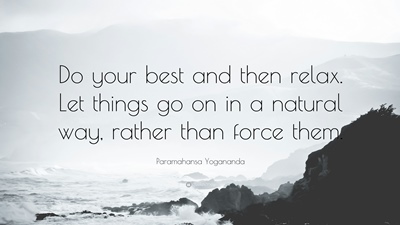 I struggle mainly on two issues.
I struggle mainly on two issues.
First, there is always this difficulty of knowing how much doing your best is really doing your best. There is always the risk of stopping too early, and not really doing anything remarkable; and there is the risk of spending too much time and effort to optimise the last bit, which is not really effective. Where should we stop ‘making our best’?
Second, I have difficulties being patient and letting go, waiting for the world to notice and to respond. Generally the response is good, but how much effort should be made in broadcasting our work, showing how we have made our best?
For the first aspect – where should we stop- it is probably a question of experience and knowing what the average person delivers in this context. On the second aspect – how to let go, well, I have to learn to be patient and reap better what the world returns.
What about you? How good are you at deciding when you have done your best and then letting go?

August 18, 2018
How to Tweak Our Inner Story to Create Personal Change
Following up on our previous post ‘How to Use Stories To Create Change‘, let’s apply the same principle to internal change, focusing on our inner story.
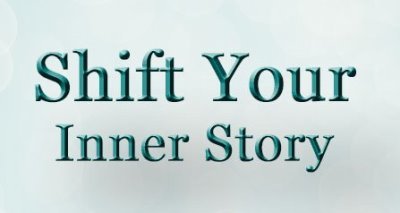 We all have inner stories we like to tell ourselves. Sometimes these are rosy stories presenting events from a way that protects us or puts a positive spin to what happens to us; sometimes they are stories that relate to the identity we’d like to have. Inner stories are very emotionally loaded.
We all have inner stories we like to tell ourselves. Sometimes these are rosy stories presenting events from a way that protects us or puts a positive spin to what happens to us; sometimes they are stories that relate to the identity we’d like to have. Inner stories are very emotionally loaded.
If we want to change, we need to change our inner stories first. By changing our inner stories we change our inner chatter and we change how we respond to events. We might even change our sense of identity. If we try to change without changing our inner stories, we will fail.
Change your inner stories to achieve real, lasting personal change.

August 14, 2018
How to Use Stories To Create Change
Valeria Maltoni reminds us in her post ‘The Commercial Power of Story‘ how stories can be powerful agents of change. She applies it in the field of marketing, advertising and commercial success – however, this is of course quite applicable to change management in general.
 I find that people do really underestimate the power of stories.
I find that people do really underestimate the power of stories.
“The language of story connects our identity, what we value, with our goals, where we want to go.
This connection between who we are and what we want explains why we pay attention to stories with emotional appeal.”
The key here is the emotional content of the story, how we can related to certain characters or situations.
When implementing change, think about storytelling as a powerful change tool. It really works.

August 11, 2018
How Life Replies to the Quality of Your Character
Robin Sharma writes “Life replies to the quality of your character. As you rise, everything ascends with you“.
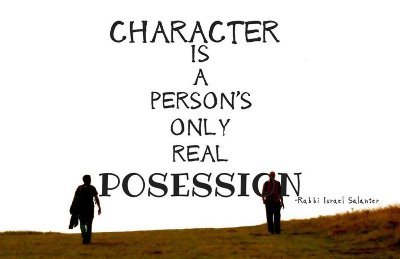 I like this quote because it reminds us that what happens to us in great part depends on us and how we can elevate our character.
I like this quote because it reminds us that what happens to us in great part depends on us and how we can elevate our character.
It also reminds us how important it is to improve the quality of our character as we advance through life. This happens through lessons learnt and sheet contemplation of our human condition.
It might be important to concentrate more on elevating our character, focusing on how we could have responded differently to certain situations. In any case that’s something I am striving to achieve.

August 7, 2018
How to Apprehend the Debate About Prosperity and Environment
There is a widespread underlying debate on the link between prosperity/wealth and environmental impact. This is quite summarised in this post by Alex Tabarrok and its comments: ‘dematerialization: humanity biggest surprise’.
 In the Industrial Age there is no doubt that prosperity meant a greater impact to the environment, linked to much increased material and energy consumption, even if protection of habitats improves local ecosystems.
In the Industrial Age there is no doubt that prosperity meant a greater impact to the environment, linked to much increased material and energy consumption, even if protection of habitats improves local ecosystems.
Environmentalists propose de-growth approaches to limit resource consumption.
As we move towards the Collaborative Age this observation is changing. Dematerialisation changes the relationship between wealth production and energy, while renewable energy expand in richer countries. The strain on local ecosystems created by poverty and overpopulation is also increasingly recognised as a wealth destruction mechanism.
Poverty, not prosperity might now be the true enemy of environment.

August 4, 2018
Why You Need to Keep Flexible Time in Your Calendar
In large organisations I often find people who have an overflowing, busy schedule. It’s not possible to get any slot in the next 3 months. How can that be? In his post ‘managerial anorexia‘ (in French) Robert Branche explains how that is madness, and even more in our increasingly complex world.
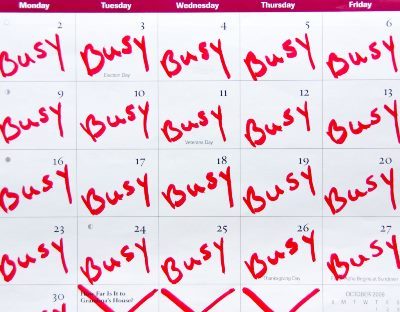 In this situation, what happens when there is a delay, and unexpected event, a new priority to be implemented? How can new ways of working and innovation develop when there is no unassigned time available ?
In this situation, what happens when there is a delay, and unexpected event, a new priority to be implemented? How can new ways of working and innovation develop when there is no unassigned time available ?
When can people take quality time to think, develop strategies, respond instead of reacting?
Adaptability and responsiveness when facing the unknown requires availability and flexible time. It requires energy reserves.
Bottom line: I need to get better at preserving free slots in my calendar, as do many people I know in particular in high stakes positions in large organisations. And that really means booking free time from now on! When do you start as well?

July 31, 2018
Five Conditions for Large Organisations to Develop Innovation Through Acquisition
Large companies seem to be considerably advantaged when it comes to innovation thanks to their unlimited resources to buy and bond together smaller organisations and startups. However this can often be a mirage.
 In the past months I have been involved as a creator of small companies, as Business Angel for startups, and also with very large companies in strategic reviews to develop new businesses. Large companies have the great advantage of unlimited resources (at the scale of startups or small companies) when it comes to put together a new business through multiple acquisitions. However at the same time they are probably not the best soil for new ideas (refer the previous post on ‘How Large Should Creative Organisations Be?‘).
In the past months I have been involved as a creator of small companies, as Business Angel for startups, and also with very large companies in strategic reviews to develop new businesses. Large companies have the great advantage of unlimited resources (at the scale of startups or small companies) when it comes to put together a new business through multiple acquisitions. However at the same time they are probably not the best soil for new ideas (refer the previous post on ‘How Large Should Creative Organisations Be?‘).
Keeping innovation sprouting in a large companies trying to develop a new business by acquisition requires:
First, a relative isolation of the innovative branch from the rest of the business and its bureaucracy. It needs to remain independent and enabled,
A certain level of stress to be maintained, otherwise, as I have observed, confort and overhead will grow tremendously without real commercial development.The unlimited resources and cash is a great advantage to develop new businesses; at the same time it can be a bit too confortable,
An industrial logic to the shopping spree around a driving idea that makes sense,
Keeping competition for the services offered by the innovative branch to the original business to detect new offerings and competitors,
Exchanges of personnel between the historical activity and the new activity to produce progressively an understanding; however this must be carefully limited and people from the original organisation carefully vetted for their adequacy.
Developing a new activity by acquisition in a large organisation is no easy fit. It requires a lot of management attention. The ‘ugly duckling’ syndrome is never far. Apply those principles to overcome the issue. Any additional idea?

July 28, 2018
How Large Should Creative Organisations Be?
In this excellent blog ‘Bigger to feel safer‘, Seth Godin discusses the arguments for and against size in creative organisations.
 Bigger organisations feel safer, get safer because of bureaucracy but that often comes at the expense of less risk-taking, thus less creativity. “In other words, hiring more people makes their useful creative productivity go down“. This is the opposite of productivity of the Industrial Age. Seth Godin’s conclusion is that “the natural scale of the [creative] enterprise is smaller than you think.”
Bigger organisations feel safer, get safer because of bureaucracy but that often comes at the expense of less risk-taking, thus less creativity. “In other words, hiring more people makes their useful creative productivity go down“. This is the opposite of productivity of the Industrial Age. Seth Godin’s conclusion is that “the natural scale of the [creative] enterprise is smaller than you think.”
I particularly like this quote by the way: “While the bureaucracy may benefit from more scale, the work doesn’t”
Thus in conclusion, truly creative organisations (or creative organisation subset) should remain small. They need to involve several individuals (creativity increases with exchange) but not too many (refer to Jeff Bezos Pizza rule). This is a great news for really creative organisations that are start ups!

July 24, 2018
How to Get Respect is to Give Respect
Robin Sharma writes “The finest way to get respect is to give respect“.
 In my view, respect is an essential component of relationship and I find it necessary to maintain as much as possible respect for people we relate to, irrespective of the circumstance. It is not easy all the time and I do not succeed all the time, but that’s the objective.
In my view, respect is an essential component of relationship and I find it necessary to maintain as much as possible respect for people we relate to, irrespective of the circumstance. It is not easy all the time and I do not succeed all the time, but that’s the objective.
Being respected in another issue. It can’t be an objective in all cases because some people are too happy abusing you. Definitely however, to get respect most of the time, the best is to be respectful of others all the time.
How much respect do you give to everyone you relate to, irrespective of their “level”?

July 21, 2018
How Emotional Labor Unfortunately Became a Gender-Orientated Concept
I am personally using the term ’emotional labor’ to designate part of my activity when it comes to dealing with other people emotions, in coaching or consulting or private life. I was struck to find that at least in the US it appears that this expression has now taken a gender inequality meaning.
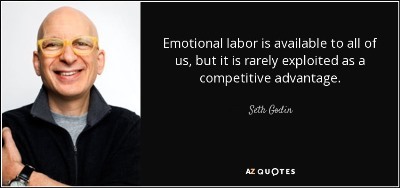 This Quartz post ‘The men’s guide to understanding emotional labor‘ explains this approach and the evolution of the meaning of this term over the years.
This Quartz post ‘The men’s guide to understanding emotional labor‘ explains this approach and the evolution of the meaning of this term over the years.
I do not understand why emotional labor is gender orientated. It means working on one own’s emotions to deal with other’s emotions. As a man, I am doing some of this work and I can identify those moments where I do this work. I do recognise that it is an essential part of my professional work even in consulting. People are more or less good at emotional labor irrespective of gender. Emotional labor is available to all of us.
In the future I will continue to use the term ’emotional labor’ as a gender-neutral concept to designate an essential skill of professional and KEENs.




